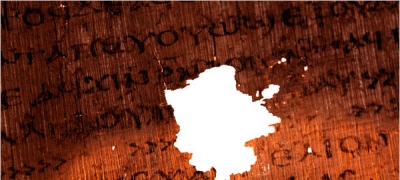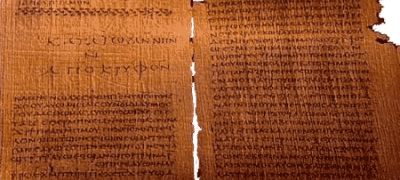Gospel of Truth: Coptic
Definitions
ACQUAINTANCESHIP (4): see RECOGNITION in Ph Notes; Hos 6:6, Mt 5:8
COUNT (32): this refers to the ancient technique of finger-calculation, whereby numbers up to 99 were counted on the left hand but from 100 upward on the right hand (the number 100 itself was formed by touching the right forefinger-tip to the upper joint of the thumb)
DEAD, ABODE OF (52): Coptic ("west", as place of entering the under-world); Hebrew SHEOL ("plead"); Greek AIDHC ("hades": "unseen")
EMANATION(14): Coptic Grobel (Bibliography #12) convincingly shows that this term alludes to the Neo-Platonic notion of divine radiation, wherein all beings are likened to sunbeams emanating from the one God
ETERNAL-ONES (15): see AEON in Ph Notes--all creatures considered as eternal, relative to the trans-dimensional mind of God (Lk 20:38)
FACE-FORM (8): Coptic ("form of face")-- countenance, visage
LOGOI (43): Greek LOGOI--this is the plural of LOGOC (see SAYING in Th Notes), indicating that each son-or-daughter of God is a divine Logos like unto the Savior (see Lk 6:40 with Jn 1:1 & Th 108, also Ph 133 where John the Baptist is quoted as Logos)
METANOIA (39): see RETHINK in Th Notes
MIDST (8): see TRANSITION in Tr 3 and in Ph Notes--amidst, in transition, hence this transitory world
SCHEME (18): Greek CXHMA--form, plan, appearance as opposed to the substantial reality
SEAL (42): sealant such as retsina, used to affix the top onto a jar/amphora to make it air-tight (perhaps led to tradition of retsina flavoring in Greek wine)






 The
cinema has long been a source of tales involving soul mate type relationships.
The
cinema has long been a source of tales involving soul mate type relationships.